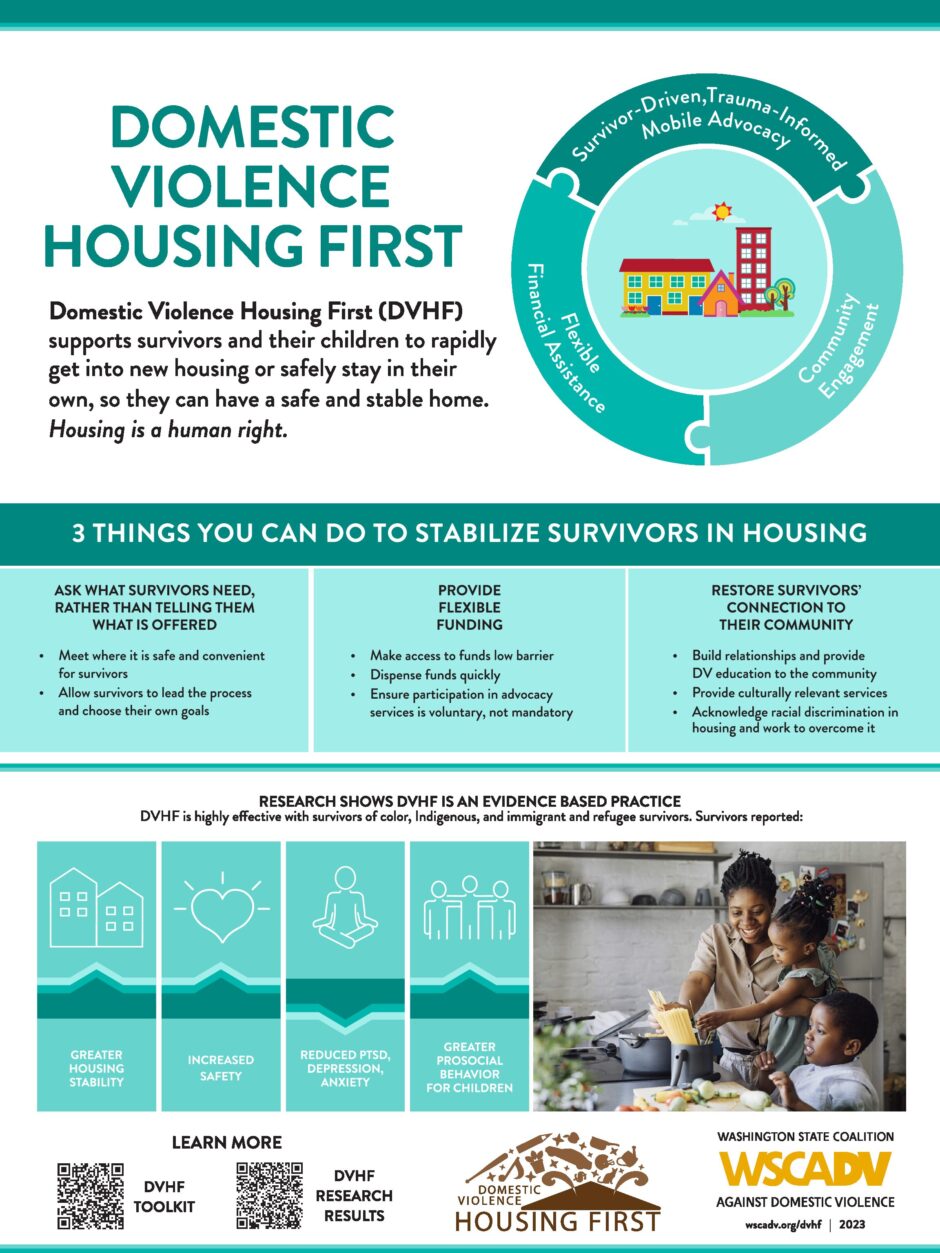
Background
The Domestic Violence Housing First (DVHF) Demonstration Evaluation was conducted under contract for the U.S. Department of Health and Human Services (DHHS) Office of the Assistant Secretary for Planning and Evaluation (ASPE) by WSCADV and its subcontractor Michigan State University. Additional funding for evaluation has also been provided as a part of the Bill & Melinda Gates Foundation Demonstration Project investment.
The five demonstration project sites that participated in the longitudinal study from the years 2016-2021 include LifeWire and New Beginnings based in the King County region and the Yakima YWCA, Light House (formerly known as Lower Valley Crisis Support Services) and New Hope in Moses Lake based in the South Central region.
Survivors seeking services from these five agencies were invited to participate in five interviews across 24 months. Researchers collected detailed information about their backgrounds, economic status, and housing and safety obstacles and examined the match between their needs and the services provided to them. Looking at the changes in housing stability, safety, health, and well-being of survivors and their children, researchers documented the impact the Domestic Violence Housing First approach had on their lives. Survivors began enrolling in the research study starting in the summer of 2017. Learn more from this project overview of the demonstration evaluation.
What We’ve Learned
Findings from the demonstration evaluation indicate that the Domestic Violence Housing First model is more effective than services as usual in helping survivors achieve housing stability, safety, and improved mental health over two years. Survivors participating in DVHF also reported higher prosocial behaviors from their children compared to parents who received traditional services. Positive change in these domains happened quickly (within the first 6 months after seeking services) and persisted across 12, 18, and 24 months.
Domestic Violence Housing First Demonstration Evaluation Project: Final Report of Findings through 24 Months – Executive Summary (September 2022)

Findings
Impact of the Domestic Violence Housing First Model on Survivors’ Safety and Housing Stability: Six Month Findings (March 2022)
Participant Socio-demographics at Program Entry (June 2020)
Publications
Importance of Survivor Driven Services for Survivors Experiencing Housing Instability – This study published in the Journal of Community Psychology utilizes data from the DVHF longitudinal study to evaluate the importance of matching service interventions to the individualized needs of survivors seeking help.
COVID-19 and Survivor Safety, Housing Stability, and Mental Health – This study published in the Journal of Community Psychology is one of the first to examine the impact of COVID-19 on unstably housed DV survivors over time.
Children as a Method of Control and Mental Health Impact – This study published in the Journal of Family Violence evaluates use of children as a tactic of intimate partner violence and subsequent impact on survivor mental health.
Criminal Background, Housing Instability, and Race – This brief published in the Journal of Interpersonal Violence commentates on the relationship between criminal records, racial background, and housing instability.
Housing Barriers for Survivors of IPV (en Español) – This article published in the Revista Interamericana de Psicologia (Interamerican Journal of Psychology) pulls data from the DVHF longitudinal study to examine the need for domestic violence programs to provide support specifically around housing barriers.
Evaluation in the Real World – Published in the American Journal of Community Psychology, this article describes the methodology used to evaluate the Domestic Violence Housing First approach.